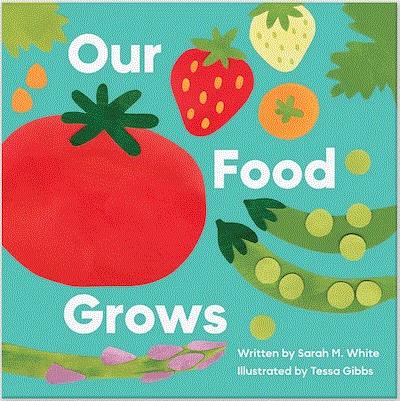“It Will Be a Strong Spring Season”
I’m not going to talk global economics or stock markets or what’s on the minds of consumers. The first two aren’t in my wheelhouse and the last, well, if I ask a million people I would get 2 million answers. But what I’ll do is, like last week, let a buZZ! reader—one of you, someone with IRL retailing and growing experience—have the floor. You’ll remember that last week I shared a comment from Mike Bodo who essentially said that the U.S. has been in a similar economic situation in the past—in fact several times, and all within the last 25 years. Consumers will find our products to be sources of enjoyment and entertainment and even solace (my words, not his).
Troy Lucht of Malmborg’s Greenhouses and Garden Centers in Rogers, Minnesota, wrote in reply. This is how he sees the industry currently:
“While I do not share the very upbeat optimism of Mike in your last email blast, I am optimistic it will still be a strong spring season. The past couple of years have shown a strong retention of the new customers gained during COVID for the Independent Garden Centers. While garden centers have historically shown resilience in trying economic times, I believe this current spring brings in new dynamics that will test those long-held beliefs. It would appear that how you see the economy and the future economy is viewed through a political lens. Depending who is in the Oval Office tends to drive the news reporting that influences our customers’ purchasing actions as well as our own attitude.
“Mike notes the consternation of tariffs and most all products for this season are not affected by them as orders and shipments were often brought into the country prior to these tariffs being enacted; particularly the new broader tariffs across nearly all countries. From this point going forward, predicting pricing/costs and sales brings the questions for next season as to the length of time these tariffs will remain in place and the cost uncertainty in planning. One question these tariffs raise for me is whether retailers should be using their order cost to derive a retail price or should they be using the new tariff included replacement cost? How often do we hear about the price of a barrel of oil when it goes up 10% in a day and almost immediately we see that reflected in the fuel price at the pump even though that oil that just saw the increase does not make it through the entire refining process and delivery for six months? The fuel industry uses a pricing format of replacement of inventory versus cost of current inventory.”
That’s a fair question that I am sure more than some of you are pondering yourself. Anyone want to weigh in on that?
But wait, I have more from Troy …

The Post-COVID Customer
Troy continued with some elucidation of the customers they’ve been seeing since 2020.
“The customers we now see in our garden centers have changed from those prior to 2020. We gained a new generation or two of gardeners that have different priorities, tastes and style. They are not as likely to purchase traditional products and in traditional forms. That is why we continue to see a softening in sales of long time mainstay products such as geraniums, pansies and seed petunias. They want new items, unique items and longer-lasting, better-performing items. It is much more an attitude of return on investment with my plants. That means vegetables, herbs, perennials and vegetative annuals will continue to be strong. The higher-priced premium pots/baskets, trees and shrubs will remain stable but not beyond price increases as they are a more significant impact to the pocketbook. After having been locked down, either by government or choice, many are not willing to forego the indulgences of travel again. Many seem to be making up for lost time as you see record bookings for cruises and vacations.
“So, in summary, I believe we will see solid sales in vegetables, herbs, annuals and perennials. But the more decorative merchandise and high-end plant products will continue to lag with my hope to maintain the numbers from 2024. I would certainly be happier if Mike and others in the latest newsletter are correct in their prognostications, but only time will tell. Now we hang on and make it through the season and pray for nice weather. You know, rain only at night and sunny, warm weekends.”
Yes, it’s Mother Nature that rules us all, let’s not forget.
Mike in Michigan and Troy in Minnesota are still on the cold side of the season. I’d like to hear from those of you who have real and actual spring gardening weather. How are my friends in Georgia and southern California and Texas feeling about spring sales so far? Those of us to the north want to know what we may or may not have to look forward to. Drop me a note about it HERE.
Oh, and if you want to weigh in about the order cost versus the replacement cost pricing, put that comment HERE.

No Tariffs on These Imports
I received an email from Galton Wholesale, makers of such products pictured below, with the subject line “0% tariffs for our Mexico products.”

“Buying from us has some big bonuses!” the email read. The third-generation family-owned business works with more than 200 independent artisans across Mexico. I wrote asking for clarification as to the 0% tariff (I had an inkling to the answer, even though none of this is my strong suit) and received the response, “We are artisan-made and we are included in the free trade between Canada, USA and Mexico,” from Javi Gallegos, one of the family. Galton’s products from Mexico fall under the import items allowed under the USMCA (formerly NAFTA). As do avocados.
Next Level
If this spring and summer begin to seem similar to the summer of 2020, think about what else took off at that time. Baking, and specifically the baking of sourdough.
(Stay with me here, I have a point.)
I, too, hopped on the sourdough train and still have the same sourdough starter (happy 5th birthday, Baby Dough!). Am I an expert sourdough baker? No. I mostly make crackers (on the daily) and pizza (weekly). I read all of the King Arthur baking newsletters and file them away for “one day.”
The KA newsletter that popped into my inbox this morning had the subject line: “New Class: Intermediate Sourdough.” Maybe it’s time to take that COVID hobby to the next level.

Now do you see my point? Can you encourage those somewhat stagnant but still curious gardeners from COVID (which more than likely is most of them) and appeal to them in some way to kick up their hobby a notch? Just a thought. And if you do anything with this idea and it pans out (or if it flops), let me know about it.

It’s Azalea Month!
We have another month in the garden (and garden center) to celebrate. The Azalea Society of America (ASA) just announced that they’ve declared April to be Azalea Month! And it’s a great time for celebrating these fabulous flowering shrubs in all their different styles and forms.

I believe this is such a new announcement that there is not yet supporting signage. However, feel free to make your own. In fact, here’s a bit of the consumer-focused press release the ASA sent along, and from here you can pull some information for including on signage. I’ve adjusted it into bullet points for ease:
-
Azaleas are long cherished as symbols of spring and renewal.
-
They are extremely popular landscape plants due to their brightly colored blooms, long-lasting flowers and their ease of cultivation.
-
Azaleas belong to the genus Rhododendron.
-
Azaleas have been hybridized for hundreds of years, and almost 10,000 different varieties have been named, although far fewer are in the trade.
-
Azaleas provide a wide variety of plant habits, sizes, colors and bloom times to meet almost every landscaping need or personal taste.
-
All native North American azaleas are deciduous (drop their leaves in the fall), with flower colors ranging from white to purple, pink, red, orange and yellow.
-
Evergreen azaleas, native primarily to Japan, have flower colors including white and various shades of purple, pink, red and reddish orange, but not yellow. Color patterns include single colors and bicolors as well as sectors, stripes and flecks, sometimes on the same plant.
-
Most azalea varieties bloom in the spring, with some blooming as late as August. Blooms typically last for one or two weeks.
-
Some azaleas are re-blooming and flower both in spring and fall (such as the Encore and ReBLOOM varieties).
That last bullet point is important to communicate to customers. Some customers may assume all azaleas will give them blooms just once a year, and others might assume that all azaleas bloom twice. Be sure they are up on the latest information.
ASA also suggests hosting a local azalea festival—perhaps one in your own garden center—and sharing #AprilisAzaleaMonth posts on your social media.
I’m still waiting for the azaleas here in Massachusetts to bloom. Maybe by late April, I hope.

Two Kid-Related Items
First, the Lots of Compassion grant program offered through KidsGardening.com and Mrs. Meyer’s Clean Day is now accepting applications. The program will award 10 organizations $20,000 each to transform a vacant lot into a garden that will grow compassion in their communities (get it? “Lots of Compassion?”). These funds will be used specifically to help nonprofit organizations, school districts, universities, groups, religious organizations or other tax-exempt entities in the U.S. to build a garden in a vacant lot.
With up to 15% of land in urban cities vacant or abandoned, turning even one vacant city lot into a garden would do a neighborhood a world of good. It provides fresh air, a chance to enjoy nature, learn about plants and gardening, and provide some focused gardening time—or just time to veg out. Turn that unsafe and unsanitary and somewhat scary space into something welcoming instead. A grant of $20,000 can do a world of good.
Applications are due June 16. Find more information HERE.

Second, a new book is out that will help kids cultivate curiosity (and hopefully eventually a garden) about food origins. This book, “Our Food Grows” by Sarah M. White, will inspire children with its beautifully illustrated pages and will take the tykes on a journey from seed to table. Kids ages 0-6 will be introduced to the origins of fruits, vegetables and even grains.

Just take a look at how pretty the cover is! And I imagine each page is equally as colorful and engaging. You can credit artist Tess Gibbs with that beauty and creativity. I grew up on a farm, so I knew from an early age how what is on our dinner plate ended up there (we had livestock, too, so I know how the sausage is made, literally). The cool thing is this book is designed as a story as well as an educational tool, as we all learn well through stories. The book is available now through the Collective Book Studio. Add it to your gift and book departments!

Farwest Registration is Open
Friends, lets jump forward several months to the end of the summer. You should take a vacation at some point, right? Head to Portland, Oregon, and write off that experience by attending the 2025 Farwest Show. The show takes place August 20-22.

One change to Farwest this year is that they’ll have three all-day tours of local nurseries and garden centers the day before the show on August 19. The new tour focuses on automation in the nursery industry. Another slight change is that the show’s seminar schedule is responsive to all segments of the industry, “allowing everyone who attends to become a more complete nursery professional,” the show’s events and education coordinator Jamie Moore said in a press release.
An early bird show discount is available until July 31, but why wait to register until then? Find event details, speakers, vendors and registration over at FarwestShow.com.
Now In Duck Camo
This is the third year I’ve hopped on the Muck Boot Company virtual new product presentation, and I can’t say enough about how their products make your feet feel so happy. And with all that standing on cement or hard-packed gravel you’ll be doing this spring, you want your feet to be happy.
I was very much taken with the Muckster Lite Clog last year. They’re light and waterproof and make my feet very, very happy. In fact, I’ve worn them outside even in the midst of winter (with a thick pair of wool socks as New Englanders do). Important for you in the garden center is that they have a verified SRC-rated slip-resistant traction that I can attest works. Plus, they are made out of BioLite, which means they’ll biodegrade in bioreactor landfills. I’m aiming to get a pair of the similar-but-different Muckster Lite Boot, too.
But anyway, what’s new this year in Mucks? These clogs now come in a Muck Duck Camo. I’m not a camo gal, but I like this camo.

Available in sizing for women and men. Maybe the Muck Duck becomes the staff summer shoe?
Another new item for Muck is the My First Muck collection. These are the cutest shoes! Available in three sizes: 0-6 months, 6-12 months and 12-18 months. Check out the chicken print!

Available in black, too, but why when you’ve got those adorable chicks?
For wholesale orders, please reach out to muckcustomersupport@rockybrands.com or visit the Muck Book Company website.






If you have any questions, comments, suggestions, etc., drop me a line if you'd like at ewells@ballpublishing.com.

Ellen Wells
Senior Editor-at-Large
Green Profit
This week's BuZZ! was sent to 28,327 loyal readers!
If you're interested in advertising on BuZZ! contact Kim Brown ASAP!